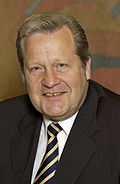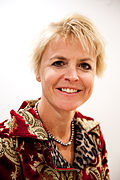This article needs additional citations for verification .(November 2009) |

This article includes a list of references, related reading, or external links, but its sources remain unclear because it lacks inline citations .(July 2025) |
The Danish Ministry of Climate, Energy and Utilities (Danish : Klima-, Energi- og Forsyningsministeriet) is a governmental agency in Denmark. It is responsible for national climate policy and international cooperation on climate change, as well as energy issues, meteorology and national geological surveys in Denmark and Greenland.












